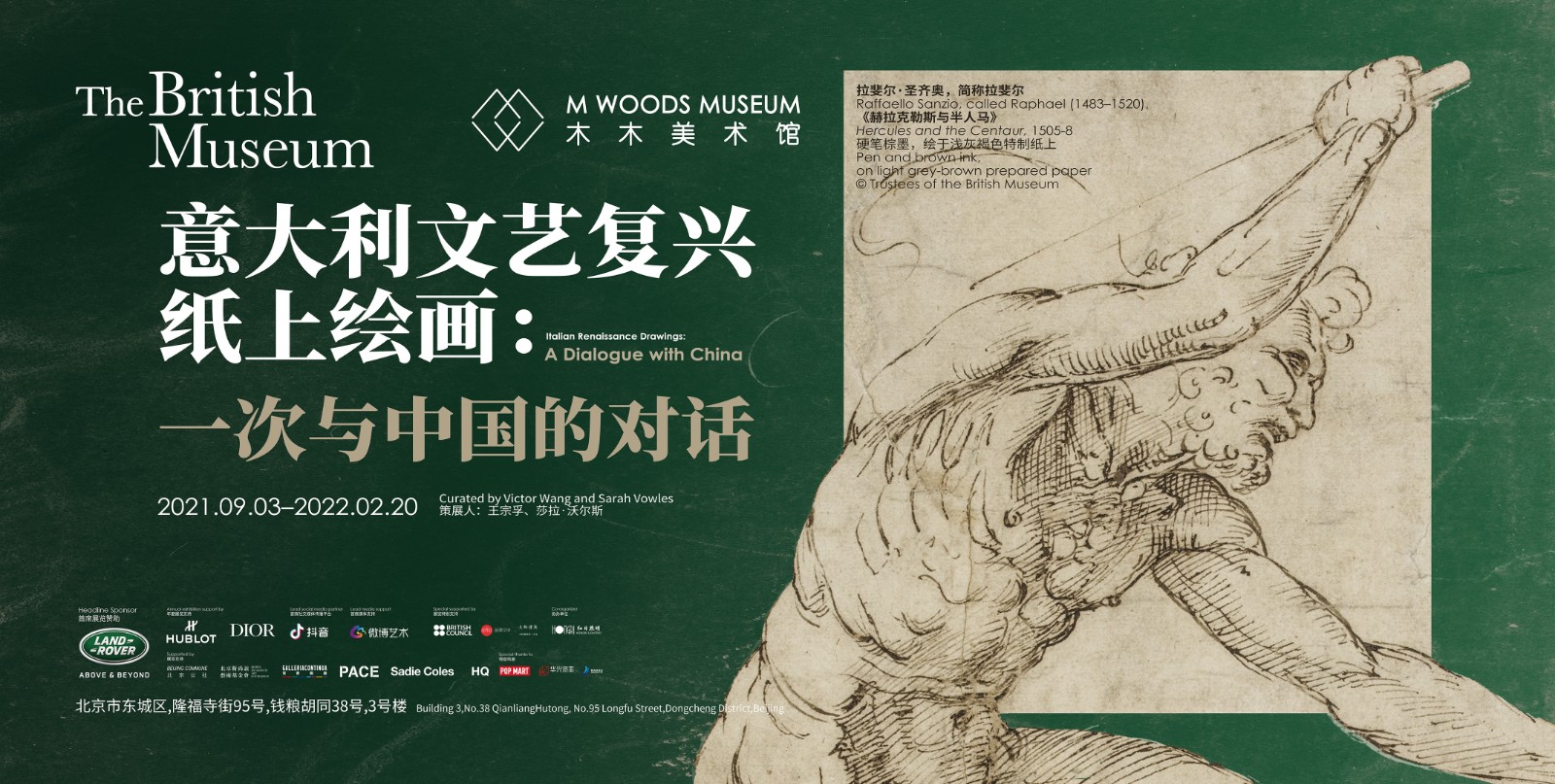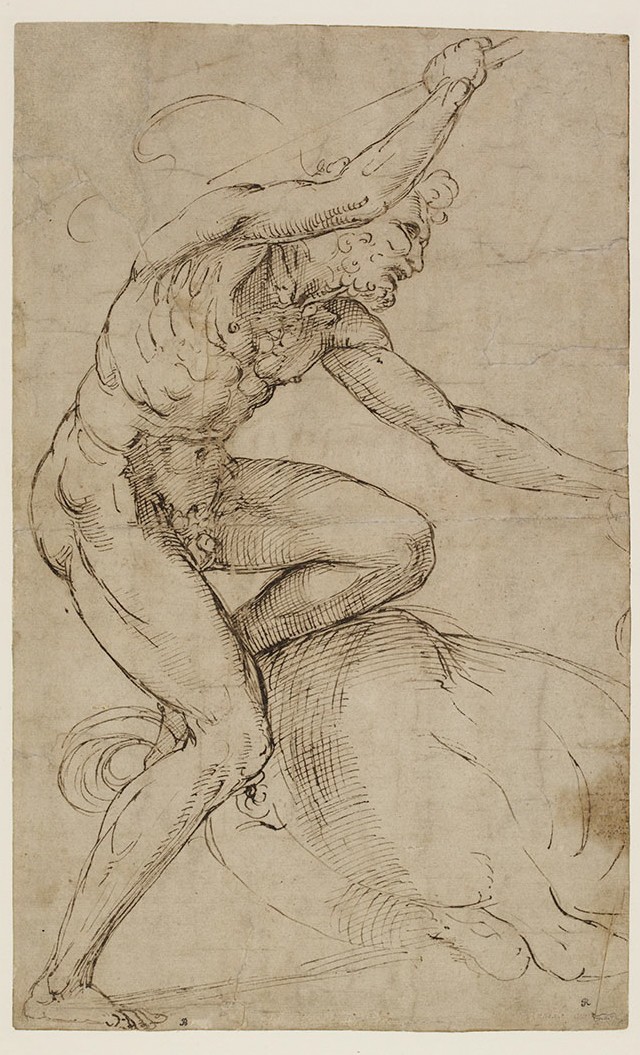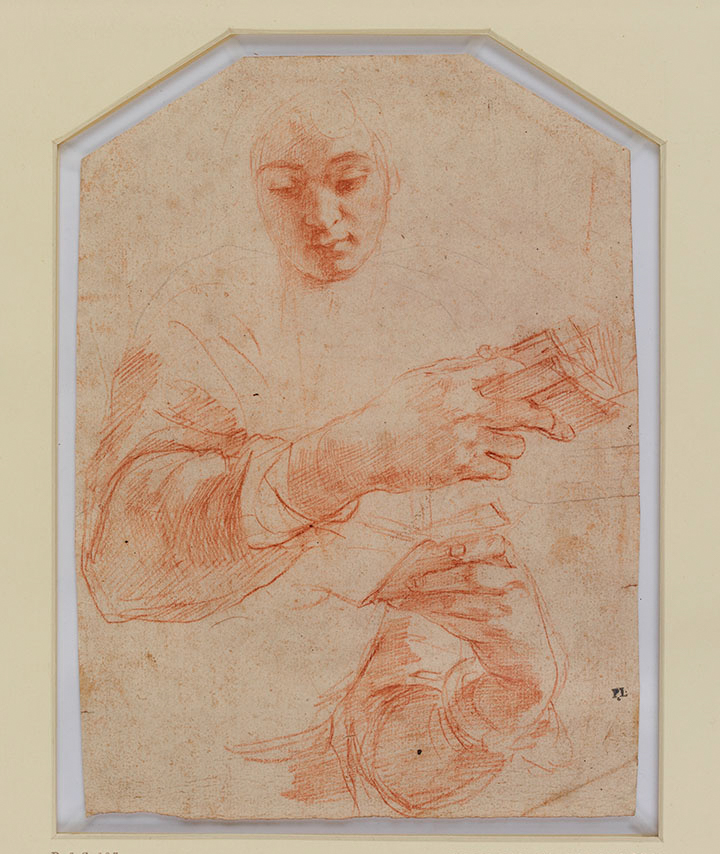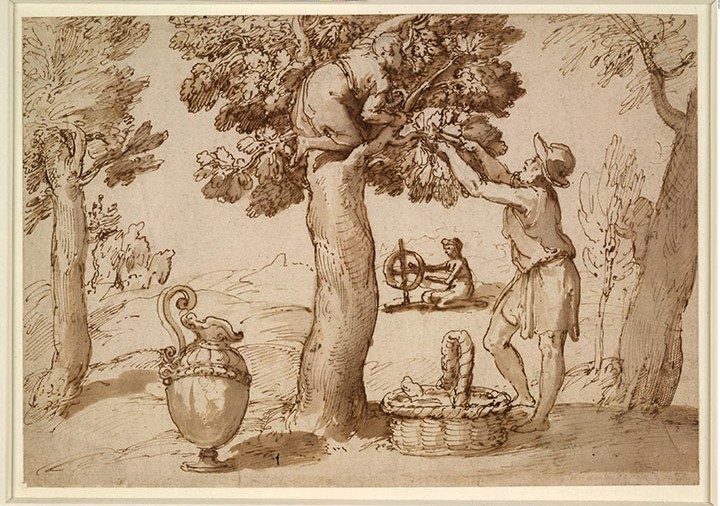
M WOODS and the British Museum (U.K.) are proud to present 'Italian Renaissance Drawings: A Dialogue with China', the first collaborative exhibition between the British Museum and an independent, not-for-profit art museum in China.
The key focus of the exhibition is to enlighten visitors about Italian Renaissance drawings, and it will include examples by many of the great Renaissance artists, including Leonardo da Vinci, Michelangelo, Titian and Raphael, taken from the historic collections of the British Museum. For the first time in their history, these works will be placed in dialogue with contemporary art from China to highlight the important trans-temporal relationships between the Western Renaissance and China.
M WOODS’ Artistic Director and Chief Curator, Victor Wang, has worked closely with the British Museum’s Smirnov Family Curator of Italian & French Prints & Drawings, Sarah Vowles, to consider the possibility of a Renaissance beyond Europe, and introduce a cross-cultural global perspective on these historical works on paper.
"Renaissance" is the French translation of the Italian word rinascimento, meaning "rebirth". It refers to the cultural and intellectual flowering that took place in Italy in the 15th century before it spread north of the Alps across Europe. However, the Italian Renaissance was not only fascinated by Greco-Roman antiquity, it was also a larger exchange of ideas, techniques, and perspectives that would go on to influence other parts of the world.

Michelangelo (1475–1564)
The Annunciation
1542–1546
Black chalk
Courtesy the British Museum ? Trustees of the British Museum
Raffaello Sanzio, called Raphael (1483–1520)
Hercules and the Centaur
1505–1508
Pen and brown ink, on light grey-brown prepared paper
Courtesy the British Museum ? Trustees of the British Museum
From an expanded historiographical perspective on both the period and the ideas that were developed, several important relationships can be revealed between the traditional European Renaissance and the modernisation of China, as both an intellectual and cultural project. Local and international scholars have discussed the influence of the Renaissance on modern China in terms of the country’s nation-building and reformational efforts, providing a framework for understanding the modernising forces of the early 20th century, a period that concluded the country’s millennium-old imperial rule, as well as the country’s cultural continuity with the Song (960–1279) and Ming Dynasties (1368-1644), which denote, amongst other things, canonical periods of high cultural tradition that are important periods of reference in the formation of China’s modern identity. Alternatively, by situating these Italian Renaissance works within a contemporary art framework, we allow for a re-orientation and re-appraisal of these historical drawings from a different cultural context and from a contemporary, non-European perspective.

Polidoro da Caravaggio (about 1500–1536/37)
Studies of a youth holding a book
About 1525
Red chalk
Purchased with the support of the National Art Collections Fund
Courtesy the British Museum ? Trustees of the British Museum
Taddeo Zuccaro (1529–1566)
The cultivation of silkworms
1564–1566
Pen and brown ink, with brown wash, over black chalk
Courtesy the British Museum ? Trustees of the British Museum
Some of the themes that characterise Renaissance art are brought together in the selection of drawings, which date from between 1470 and 1580 and represent artists working across the Italian peninsula. The works in the exhibition have been divided into six thematic sections: The Human Figure, Movement, Light, Costume and Drapery, The Natural World, and Storytelling. The exhibition then explores how artists both in the Renaissance and in China brought life, form, and dynamism to their compositions through the study of these themes such as movement, light and shade, and costume. This presentation will bring together the artist’s understanding of the earlier themes into a conversation, while opening up a new space that also considers the parallels and tangents between these perspectives and histories, with some new commissioned artworks that directly make reference to the Renaissance drawings. The work of influential Chinese scholars such as Jiang Baili, Hu Shi, Liang Sicheng and Fu Lei, who were key figures in these cultural movements and national reforms, will be represented in specific archival materials, while contextual information on the importance of drawing as a conceptual and explorative tool for Renaissance artists will also be on display.
About the exhibition
Dates: 3 September 2021 - 20 February 2022
Curated by Victor Wang, M WOODS, and Sarah Vowles, the British Museum
The presentation of this exhibition is a collaboration between M WOODS Museum and the British Museum
Works from the British Museum Collection by: Leonardo da Vinci, Michelangelo, Titian, Raphael, Polidoro da Caravaggio, Lorenzo di Credi, and more.
In dialogue with artists: Hao Liang (郝量), Hu Xiaoyuan(胡曉媛), Jin Shangyi (靳尚誼), Kan Xuan (闞萱), Liu Xiaodong (劉小東), Liu Ye (劉野), Qiu Xiaofei (仇曉飛), Xie Nanxing (謝南星), Yu Ji (于吉), Zeng Fanzhi (曾梵志)
Courtesy M WOODS.




























